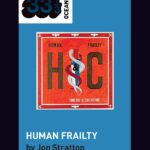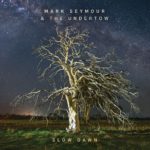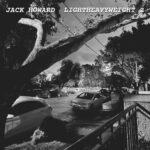The Riff Killers Transcend Cult
Early interview with drummer Doug Falconer between the first and second albums.
Author: Elly McDonald, Record.
Date: July 1982.
Original URL: N/A.
Article Text
Melbourne – “It was horrendous how quickly it started last year,” confides Doug Falconer, Hunters & Collectors’ drummer. In the 12 months since they began playing regularly this six-piece Melbourne outfit has been labelled at various times by various people as a funk band, a godsend for the musically hip (or the terminally cool), and even as the Next Big Thing – labels the band disclaims and finds offensive. Nevertheless, there’s an element of truth in each of them.
As the debut offering on Mushroom Records ‘alternative’ label White Records, the Hunters & Collectors 3 track EP released in January went to Number 19 on Melbourne’s Top 40 charts within three weeks, and received FM airplay in all states. In mid-July, the band released their debut album. As with the EP, it’s untitled, and the packaging is a bit eccentric too. Because the eight tracks total 52 minutes and it’s impossible to squeeze that much playing time in without sacrificing sound quality, Hunters & Collectors have chosen to release the album as a double-set rather than leave tracks off. A 12” 33 rpm disc with three tracks on each side will retail in tandem with a 12” 45 rpm, housing the remaining two tracks. In all, the cost is $10.99 which at one dollar more than the standard Mushroom price, will buy you “about half as much again as you get with most albums.”
Compared with the EP, Falconer believes the album sounds “a lot different. The EP was recorded in September and mixed during the recording sessions for the album, which were in November/December. But then there was a long gap between the recording sessions and the mixing because of a lot of hassles that should have been avoidable but weren’t. Tony Cohen engineered and co-produced the recording sessions, but he had to dip out of the project after that, and we ended up producing the album ourselves. Another reason’s the album sound is different is because the album was recorded at AAV and not a Richmond Recorders this time, and AAV’s a much better studio. Part of our deal with White is that we end up paying for all our recording and we take a much higher royalty because of that. Fortunately we’re efficient in the studio because we record in one hit, always. I think there were two overdubs on the whole album, apart from the vocals. So from beginning to end the album took seven months, but it wasn’t seven months of studio time – it was seven months of hatching attacks.
“The album’s a very representative example of how we were about six months ago.” considers Falconer. “Of those songs, the ones we like we still play live. But there are a few tracks which – well, they died a natural death, really. We don’t do them anymore.”
A Hunters & Collector’s perception of Hunters & Collectors runs something like this. “There are six instrumentalists on stage,” he begins. “The basic unit of drums, bass, two guitars, vocals, keyboards, and percussion. It’s not as ordinary as it sounds, but that’s all there. And there’s our mixer who’s been with us all the time and is indispensable. On top of that there’s a brass section which varies between three and six people, one of whom is now our manager. More often than not there are even more people than that on stage by the end of the night – just people that hop up banging things. Most of the time it fits in.
“It’s not traditional pop structure,” he continues. “Because the instruments aren’t used in the same way that a traditional pop band would use instruments – meaning with the drums there to give the beat, the bass there to give the throb, the vocals to do a verse and chorus and there’s a tiddly bit and then a middle bit. It doesn’t work like that with us. None of us play that way, and we don’t write songs that way.”
How do they write songs?
“With much sweat and hair-tearing!” he laughs. “All the songs are co-written in rehearsal. No one ever comes in with more than one idea, which is then battered around until it either works or it doesn’t. More often than not the idea would be based around either a drum or percussion rhythm, and everything is laid on from there. It’s fairly spacey, in the sense that no one person is playing anything busy, and usually no one person is doing anything that dictates. Things all mesh together. The drums might not make much sense without the percussion; the bass mightn’t make any sense without the guitars. It’s a dangerous way of playing because if one thing isn’t there or doesn’t mesh, or just doesn’t come out tight, it can ruin the feel. But then again, it’s a great way to play music when it does work.”
“To me, there are no bands that are consistently working the same way,” he considers. “But individual tracks, individual sounds, individual feels come from all over the place. We listen to a huge range of stuff. We use, in general terms, influences from a lot of different fields. We got labelled as a funk band very early on, but that was never a genuinely viable thing. Funk music does use similar values to what we use some of the time, but it’s never consistent. Particularly now – the new material varies a hell of a lot more than it used to. We’re writing much more melodic stuff these days. Early on we probably relied on heavy beats a bit too much. When you’re having trouble tying it all together you think, oh well, throw in a beat that people can headbang to and she’ll be sweet. But nowadays we’re much more confident that we can write light spacier feels rather than just rhythms. To that extent we’re possibly a bit less danceable, but to us this is much more valuable. It’s a natural progression.”
Comments
Thank you to Stephen for typing out this article for us all to enjoy!





